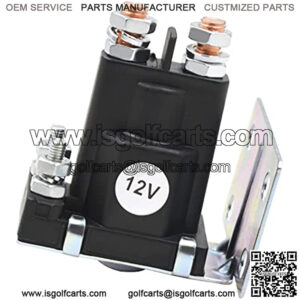As any maintenance supervisor or crew member can attest, it’s often the smallest, simplest component in a machine that causes the most grief when it malfunctions. Case in point: solenoids. It doesn’t get much simpler than these basic parts! They open and close, doing little else. However, when one stops working, it can send your entire piece of machinery into a nose dive.
The problem with a solenoid malfunction is that what caused it isn’t always clear. Solenoids are small and simple in their function and, when they’re devoid of damage, it can be difficult to determine what, exactly, went wrong. It often takes a repair professional’s keen eye to figure out why a solenoid is stuck open, closed, or somewhere in between.
Three solenoid issues
Here are a few tips that can clue you in on what might be preventing a solenoid from functioning as expected:
1. Problem: The valve is stuck open or closed.
Generally, the most common reason a solenoid is “stuck” open or closed is because it loses power. If there’s no power to the coil or if power is interrupted, the solenoid will cease functioning and remain in whatever position it was last in. Often, power interrupts to the circuitry can cause the valve to stick, and it will remain that way even after you restore power, requiring a reset.
Another potential catalyst for a solenoid that’s open or closed is coil failure or a burnout. Too much voltage can fry a coil, rendering the valve inoperable.
2. Problem: The valve consistently opens without prompts.
If your solenoid is constantly opening without prompts, the problem is likely to have ramifications for your entire system’s operation. This problem is one that’s tricky to diagnose because it depends on the variables in proximity to it. These include, for example, hydraulic pressure against the valve or surges in the electrical circuit the solenoid operates on. The solution is to perform a series of checks and tests to determine what’s triggering the valve open and to adjust based on findings.
3. Problem: The valve will not close.
If you’re having trouble with a solenoid that simply will not close, the first thing to check is the valve itself. Many times, its inability to close is due to obstruction from a foreign object or debris caught in the stem. Once removed, the solenoid should operate functionally once again.
If debris isn’t present, a power disruption could be the cause. Check to make sure there is adequate power to the solenoid circuit. If there isn’t, restoring it and resetting the solenoid may fix the issue. If power isn’t the problem, check the alignment of the valve. If the valve was previously forced open or has failed, misalignment may be preventing it from closing again. Inspect both the seat and the stem for damage, which may indicate a forced opening.
“Keyword”
“how do i know if my golf cart solenoid is bad”
“why won’t my electric golf cart start”
“how to bypass solenoid on electric golf cart”
“does an electric golf cart have a solenoid”
“replace solenoid on golf cart”
“how to replace solenoid on gas golf cart”
“how to replace a golf cart solenoid”

